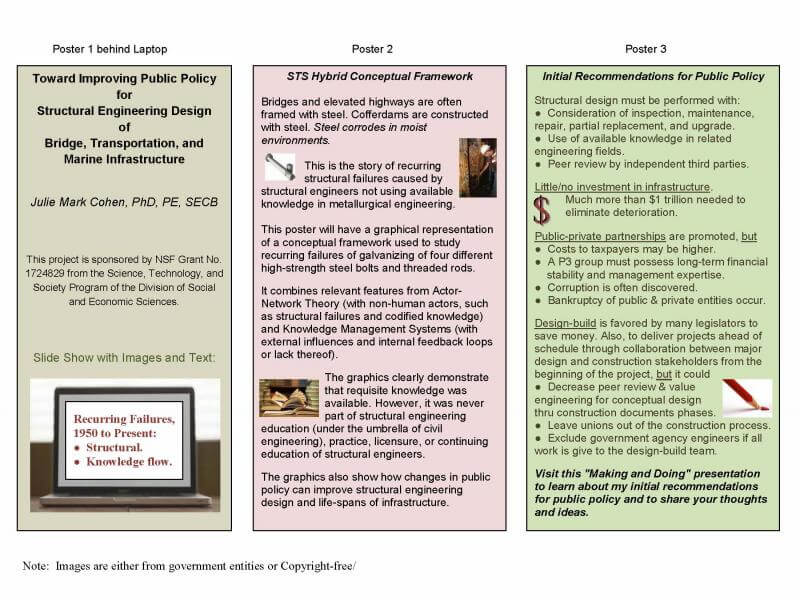Toward Improving Public Policy for Struct Engrg Design of Bridge, Transport & Marine Infrastructure
Julie Mark CohenBoston 2017: Design and Planning

In the United States, the public's demand on infrastructure has grown to exceed capacity. Inspection and maintenance have been chronically neglected. Infrastructure has been allowed to wear out with funding a persistent issue. Another reason for infrastructure deterioration is not as readily apparent: structural engineers have not used available knowledge in their designs, thus unintentionally causing failures, some of which occurred soon after structures were placed in service. Dr. Cohen has substantiated this reason with historical data and examination of states of knowledge and practice within structural engineering (SE). She extended her review by including the states of knowledge within related fields of engineering to identify knowledge creators. In doing so, she opened the door to a study of the culture and traditions of structural engineering practice, specifically the use of knowledge in design decision-making, as well as flaws in SE practice and public policy.
Within the STS community, structural engineering is an overlooked engineering profession. In the United States, SE education differs from other fields with undergraduate education under the umbrella of civil engineering. In SE, the culture of design decision-making and traditions in practice also differ. Design decisions are shaped by forces from human and non-human 'entities,' both external and internal to SE. These include accredited university curricula, professional magazines/journals, textbooks, codes, national standards, fabricators, manufacturers' catalogs, professional societies, state licensing agencies, government entities' initiatives and policies, clients' budgets, research in structural engineering and related engineering fields, and failures. Yet, SE does not have a tradition of using available, requisite knowledge in related engineering fields, such as metallurgical engineering. This chronic 'intellectual blindness' unintentionally results in infrastructure failures. With the many different types of forces influencing SE practice and recurring failures, no single STS conceptual framework is appropriate. A hybrid conceptual framework is needed with non-human actors from Actor-Network Theory and knowledge flow (not directionless diffusion) with creators, carriers, conveyors and users, as well as feedback loops and externalization from Knowledge Management Systems.
In a pilot study of one particular failure type (thru-fractures of steel bolt and threaded rod from not using a 1932 ASTM standard developed by metallurgists), a hybrid conceptual framework is developed and its efficacy is explored. This project serves as the analytical foundation for the author's larger effort, 'U.S. Structural Engineers: Constraints on Design Decisions and Recurring, Costly Infrastructure Failures, 1930-2017.' More importantly, it introduces the STS community to a new STS hybrid conceptual framework that can be employed when 'intellectual blindness' can be attributed to recurring failures in another field in engineering, or in science, medicine, or another technical field.
The results from the pilot study offer the platform to develop initial recommendations (1) to improve SE education, practice, licensure, and continuing education, and (2) for forward-thinking public policy regarding infrastructure by improving how structural design decisions are made, starting with requirements for third-party independent peer review.
Published: 01/30/2023
